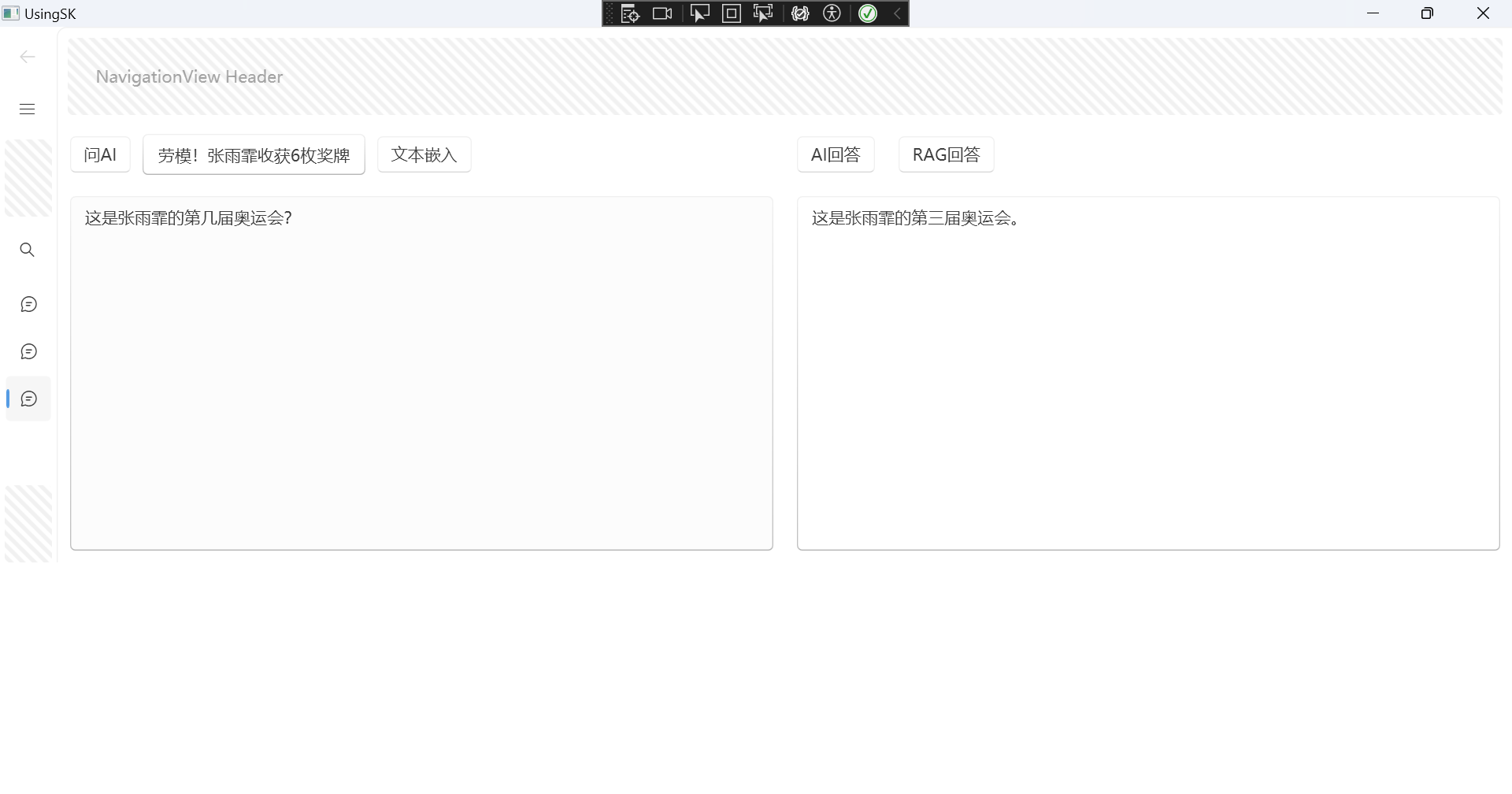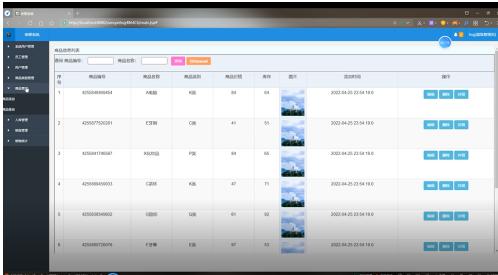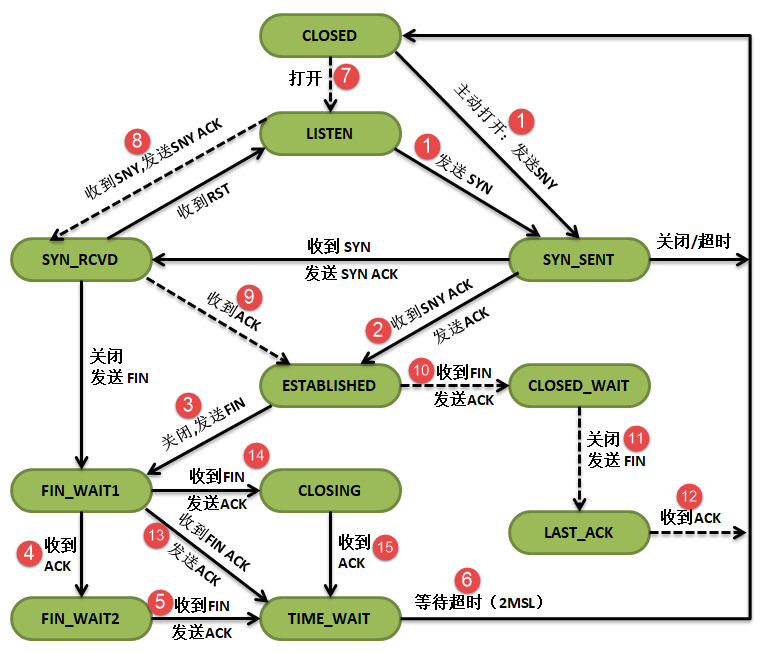一、PV和PVC
1.PersistentVolume (PV)
2.PersistentVolumeClaim (PVC)
二、通过NFS实现持久化存储
1.配置nfs
| nfs--server | nfs-client |
|---|---|
| k8s-master | k8s-node1、k8s-node2 |
1)安装nfs服务——所有节点
[root@k8s-master ~] # yum install -y nfs-common nfs-utils
2)创建共享目录并授权——在nfs-server操作
[root@k8s-master ~]# mkdir /nfsdata
[root@k8s-master ~]# chmod 666 /nfsdata
3)编辑exports文件——在nfs-server操作
[root@k8s-master ~] # vim /etc/exports[root@k8s-master ~] # cat /etc/exports/nfsdata *(rw,no_root_squash,no_all_squash,sync)
4)启动rpc和nfs——在nfs-server操作
[root@k8s-master ~] # systemctl start rpcbind[root@k8s-master ~] # systemctl start nfs
5)测试NFS挂载是否可用
在nfs-client操作
[root@k8s-node2 ~] # mkdir /test[root@k8s-node2 ~] # mount -t nfs 192.168.22.139:/nfsdata /test/ #nfs-server的IP[root@k8s-node2 ~] # df -Th|grep "/test"192.168.22.139: /nfsdata nfs4 19G 9 .9G 9 .0G 53 % /test[root@k8s-node2 ~] # touch /test/ip.txt[root@k8s-node2 ~] # ls /test/ip.txt
在nfs-server操作
[root@k8s-master ~] # ls /nfsdata/ip.txt[root@k8s-node2 ~] # umount /test #测试完成之后,就可以卸载了
2.创建PV
1)编写yaml配置文件
[root@k8s-master ~]# vim nfs-pv1.yaml
[root@k8s-master ~]# cat nfs-pv1.yaml
apiVersion: v1
kind: PersistentVolume
metadata:name: mypv1
spec:capacity: #指定PV的容量storage: 1GiaccessModes: #指定访问模式- ReadWriteOnce #指PV能以read-write模式mount到单个节点persistentVolumeReclaimPolicy: Recycle #指定当前PV的回收策略为Recycle,清除PV中的数据storageClassName: nfs #指定PV的class为nfs;相当于为PV设置了一个分类nfs:path: /nfsdataserver: 192.168.22.139 #指定nfs目录所在的机器的地址PS:
1)accessModes 指定访问模式为 ReadWriteOnce ,⽀持的访问模式有:
2)应用并创建mypv1
[root@k8s-master ~]# kubectl apply -f nfs-pv1.yaml
persistentvolume/mypv1 created
[root@k8s-master ~]# kubectl get pv
NAME CAPACITY ACCESS MODES RECLAIM POLICY STATUS CLAIM STORAGECLASS REASON AGE
mypv1 1Gi RWO Recycle Available nfs 8s
# STATUS为Available,表示mypv1准备就绪,可以被PVC申请3.创建PVC
1)编写yaml文件
[root@k8s-master ~]# vim nfs-pvc1.yaml
[root@k8s-master ~]# cat nfs-pvc1.yaml
apiVersion: v1
kind: PersistentVolumeClaim
metadata:name: mypvc1
spec:accessModes: #指定访问模式- ReadWriteOnceresources:requests:storage: 1Gi #指定访问PV的容量storageClassName: nfs #指定访问PV的class
2)应用并查看
[root@k8s-master ~]# kubectl apply -f nfs-pvc1.yaml
persistentvolumeclaim/mypvc1 created
[root@k8s-master ~]# kubectl get pvc
NAME STATUS VOLUME CAPACITY ACCESS MODES STORAGECLASS AGE
mypvc1 Bound mypv1 1Gi RWO nfs 6s
[root@k8s-master ~]# kubectl get pv
NAME CAPACITY ACCESS MODES RECLAIM POLICY STATUS CLAIM STORAGECLASS REASON AGE
mypv1 1Gi RWO Recycle Bound default/mypvc1 nfs 12m#从查询pv和pvc的结果来看,mypvc1已经Bound到mypv1,申请成功4.创建pod
1)编写pod的yaml文件并应用
[root@k8s-master ~]# vim pod1.yaml
[root@k8s-master ~]# cat pod1.yaml
apiVersion: v1
kind: Pod
metadata:name: nfs-pod-nginxlabels:app: nginx
spec:containers:- name: mypod1image: daocloud.io/library/nginxports:- containerPort: 80volumeMounts:- mountPath: "/usr/share/nginx/html"name: mydatavolumes:- name: mydatapersistentVolumeClaim:claimName: mypvc1
[root@k8s-master ~]# kubectl apply -f pod1.yaml
pod/nfs-pod-nginx created
5.验证
[root@k8s-master ~]# kubectl exec -it nfs-pod-nginx /bin/bash
kubectl exec [POD] [COMMAND] is DEPRECATED and will be removed in a future version. Use kubectl exec [POD] -- [COMMAND] instead.
root@nfs-pod-nginx:/# ls /usr/share/nginx/html/
ip.txt #上述/nfsdata中的文件
root@nfs-pod-nginx:/# echo "hello!" > /usr/share/nginx/html/index.html
root@nfs-pod-nginx:/# exit
exit
command terminated with exit code 130
[root@k8s-master ~]# ls /nfsdata/ #也可在nfs的共享⽬录中查看到,说明卷共享成功
index.html ip.txt
[root@k8s-master ~]# cat /nfsdata/index.html
hello!
三、PV的回收
1.Retain回收策略

2.删除pod、pvc、pv
[root@k8s-master ~]# kubectl delete pod nfs-pod-nginx
pod "nfs-pod-nginx" deleted
[root@k8s-master ~]# kubectl delete pvc mypvc1
persistentvolumeclaim "mypvc1" deleted
[root@k8s-master ~]# kubectl get pv
NAME CAPACITY ACCESS MODES RECLAIM POLICY STATUS CLAIM STORAGECLASS REASON AGE
mypv1 1Gi RWO Retain Released default/mypvc1 nfs 98m
# 虽然 mypv1 中的数据得到了保留,但其 PV 状态会⼀直处于 Released ,不能被其他PVC申请;
# 为了重新使⽤存储资源,可以删除并重新创建mypv1;删除操作只是删除了PV对象,存储空间中的数据并不会被删除
[root@k8s-master ~]# kubectl delete pv mypv1
persistentvolume "mypv1" deleted
[root@k8s-master ~]# ls /nfsdata/index.html
/nfsdata/index.html
[root@k8s-master ~]# cat /nfsdata/index.html
hello!
四、PV&PVC应用在MySQL的持久化存储
1.创建pv和pvc
1)创建pv,mysql-pv.yaml文件
[root@k8s-master mysqlpv]# vim mysql-pv.yaml
[root@k8s-master mysqlpv]# cat mysql-pv.yaml
apiVersion: v1
kind: PersistentVolume
metadata:name: mysql-pv
spec:capacity:storage: 1GiaccessModes:- ReadWriteOncepersistentVolumeReclaimPolicy: RetainstorageClassName: nfsnfs:path: /nfsdata/mysql-pv #记得创建这个目录server: 192.168.22.139
[root@k8s-master mysqlpv]# kubectl apply -f mysql-pv.yaml
persistentvolume/mysql-pv created
2)创建PVC,mysql-pvc.yaml文件
[root@k8s-master mysqlpv]# vim mysql-pvc.yaml
[root@k8s-master mysqlpv]# cat mysql-pvc.yaml
apiVersion: v1
kind: PersistentVolumeClaim
metadata:name: mysql-pvc
spec:accessModes:- ReadWriteOnceresources:requests:storage: 1GistorageClassName: nfs
[root@k8s-master mysqlpv]# kubectl apply -f mysql-pvc.yaml
persistentvolumeclaim/mysql-pvc created2.部署MySQL
编写mysql-pod.yaml文件
[root@k8s-master mysqlpv]# vim mysql-pod.yaml
[root@k8s-master mysqlpv]# cat mysql-pod.yaml
apiVersion: v1
kind: Service
metadata:name: mysql
spec:ports:- port: 3306targetPort: 3306selector:app: mysql
---
apiVersion: apps/v1
kind: Deployment
metadata:name: mysql
spec:selector:matchLabels:app: mysqltemplate:metadata:labels:app: mysqlspec:containers:- image: daocloud.io/library/mysql:5.7.5-m15name: mysqlenv:- name: MYSQL_ROOT_PASSWORDvalue: qinxue@123ports:- containerPort: 3306name: mysqlvolumeMounts:- name: mysql-persistent-storagemountPath: /var/lib/mysqlvolumes:- name: mysql-persistent-storagepersistentVolumeClaim:claimName: mysql-pvc
[root@k8s-master mysqlpv]# kubectl apply -f mysql-pod.yaml
service/mysql created
deployment.apps/mysql created
3.向MySQL添加数据
1)查看MySQL部署在node2节点
[root@k8s-master mysqlpv]# kubectl get pod -o wide | grep mysql
mysql 1/1 Running 6 (3h27m ago) 13d 10.244.1.45 k8s-node1 <none> <none>
mysql-55c4f546d-4nkt9 1/1 Running 0 43s 10.244.2.52 k8s-node2 <none> <none>2)进入容器并登录mysql
[root@k8s-master mysqlpv]# kubectl exec -it mysql-bd87b4f8f-l6tdx /bin/bash
kubectl exec [POD] [COMMAND] is DEPRECATED and will be removed in a future version. Use kubectl exec [POD] -- [COMMAND] instead.
root@mysql-bd87b4f8f-l6tdx:/# mysql -uroot -p‘qinxue@123’3)添加数据
mysql> create database db1
Query OK, 1 row affected (0.00 sec)
4.验证数据一致性
1)删除deployment,pvc,pv;然后重新创建pv,pvc,deployment;数据在Mysql中,仍然挂载成功;
五、PV/PVC动态供应项目实战

1.定义一个storage
[root@k8s-master pv-pvc]# vim storageclass-nfs.yaml
[root@k8s-master pv-pvc]# cat storageclass-nfs.yaml
apiVersion: storage.k8s.io/v1
kind: StorageClass
metadata:name: managed-nfs-storage
provisioner: fuseim.pri/ifs
[root@k8s-master pv-pvc]# kubectl apply -f storageclass-nfs.yaml
storageclass.storage.k8s.io/managed-nfs-storage created
[root@k8s-master pv-pvc]# kubectl get sc
NAME PROVISIONER RECLAIMPOLICY VOLUMEBINDINGMODE ALLOWVOLUMEEXPANSION AGE
managed-nfs-storage fuseim.pri/ifs Delete Immediate false 20s
2.部署授权
1)因为storage⾃动创建pv需要经过kube-apiserver,所以要进⾏授权
2)创建1个serviceaccount;创建1个clusterrole,并赋予应该具有的权限,⽐如对于⼀些基本api资源的增删改查; 创建1个clusterrolebinding,将sa和clusterrole绑定到⼀起;这样sa就有权限了;然后pod中再使⽤这个sa,那么pod再创建的时候,会⽤到sa,sa具有创建pv的权限,便可以⾃动创建pv;
[root@k8s-master pv-pvc]# vim rabc.yaml
[root@k8s-master pv-pvc]# cat rabc.yaml
apiVersion: v1
kind: ServiceAccount
metadata:name: nfs-client-provisioner
---
kind: ClusterRole
apiVersion: rbac.authorization.k8s.io/v1
metadata:name: nfs-client-provisioner-runner
rules:- apiGroups: [""]resources: ["persistentvolumes"]verbs: ["get", "list", "watch", "create", "delete"]- apiGroups: [""]resources: ["persistentvolumeclaims"]verbs: ["get", "list", "watch", "update"]- apiGroups: ["storage.k8s.io"]resources: ["storageclasses"]verbs: ["get", "list", "watch"]- apiGroups: [""]resources: ["events"]verbs: ["list", "watch", "create", "update", "patch"]
---
kind: ClusterRoleBinding
apiVersion: rbac.authorization.k8s.io/v1
metadata:name: run-nfs-client-provisioner
subjects:- kind: ServiceAccountname: nfs-client-provisionernamespace: default
roleRef:kind: ClusterRolename: nfs-client-provisioner-runnerapiGroup: rbac.authorization.k8s.io
[root@k8s-master pv-pvc]# kubectl apply -f rabc.yaml
serviceaccount/nfs-client-provisioner created
clusterrole.rbac.authorization.k8s.io/nfs-client-provisioner-runner created
clusterrolebinding.rbac.authorization.k8s.io/run-nfs-client-provisioner created
[root@k8s-master pv-pvc]# kubectl get sa
NAME SECRETS AGE
default 0 14d
nfs-client-provisioner 0 14s
[root@k8s-master pv-pvc]# kubectl get cr |grep nfs
error: the server doesn't have a resource type "cr"
[root@k8s-master pv-pvc]# kubectl get clusterrole |grep nfs
nfs-client-provisioner-runner 2024-08-06T04:52:23Z
[root@k8s-master pv-pvc]# kubectl get clusterrolebinding |grep nfs
run-nfs-client-provisioner ClusterRole/nfs-client-provisioner-runner 3m58s
3.部署一个自动创建pv的pod服务
[root@k8s-master pv-pvc]# vim deployment-nfs.yaml
[root@k8s-master pv-pvc]# cat deployment-nfs.yaml
kind: Deployment
apiVersion: apps/v1
metadata:name: nfs-client-provisioner
spec:selector:matchLabels:app: nfs-client-provisionerreplicas: 1strategy:type: Recreatetemplate:metadata:labels:app: nfs-client-provisionerspec:nodeName: k8s-node2serviceAccount: nfs-client-provisionercontainers:- name: nfs-client-provisionerimage: quay.io/external_storage/nfs-client-provisioner:latestvolumeMounts:- name: nfs-client-rootmountPath: /persistentvolumesenv:- name: PROVISIONER_NAMEvalue: fuseim.pri/ifs- name: NFS_SERVERvalue: 192.168.22.139- name: NFS_PATHvalue: /opt/container_datavolumes:- name: nfs-client-rootnfs:server: 192.168.22.139path: /opt/container_data
[root@k8s-master pv-pvc]# kubectl apply -f deployment-nfs.yaml
deployment.apps/nfs-client-provisioner created
# nfs-client-provisioner 会以pod运⾏在k8s中
[root@k8s-master pv-pvc]# kubectl get pod |grep nfs
nfs-client-provisioner-6c745f9d9-msrtp 1/1 Running 0 6s4.部署有状态服务,测试自动创建pv
部署yaml⽂件参考:https://kubernetes.io/docs/tutorials/stateful-application/basic-stateful-set/
这里部署nginx服务
[root@k8s-master pv-pvc]# cat nginx.yaml
apiVersion: v1
kind: Service
metadata:name: nginxlabels:app: nginx
spec:ports:- port: 80name: webclusterIP: Noneselector:app: nginx
---
apiVersion: apps/v1
kind: StatefulSet
metadata:name: web
spec:serviceName: "nginx"replicas: 2selector:matchLabels:app: nginxtemplate:metadata:labels:app: nginxspec:containers:- name: nginximage: daocloud.io/library/nginx:1.13.0-alpineports:- containerPort: 80name: webvolumeMounts:- name: wwwmountPath: /usr/share/nginx/htmlvolumeClaimTemplates:- metadata:name: wwwspec:accessModes: [ "ReadWriteOnce" ]storageClassName: "managed-nfs-storage"resources:requests:storage: 1Gi
[root@k8s-master pv-pvc]# kubectl apply -f nginx.yaml
service/nginx created
statefulset.apps/web created
[root@k8s-master pv-pvc]# kubectl get pod
NAME READY STATUS RESTARTS AGE
configmap-pod 1/1 Running 5 (52m ago) 12d
configmap-test-pod 1/1 Running 5 (52m ago) 12d
mypod 1/1 Running 7 (52m ago) 13d
mysql 1/1 Running 7 (52m ago) 13d
nfs-client-provisioner-6c745f9d9-msrtp 1/1 Running 0 19m
tomcat 1/1 Running 7 (52m ago) 14d
web-0 1/1 Running 0 42s
web-1 1/1 Running 0 16s
# web-0创建成功后才会创建web-12)进入容器内在/usr/share/nginx/html目录下创建文件验证;删除一个pod后,数据仍然存在,不会丢失;



















